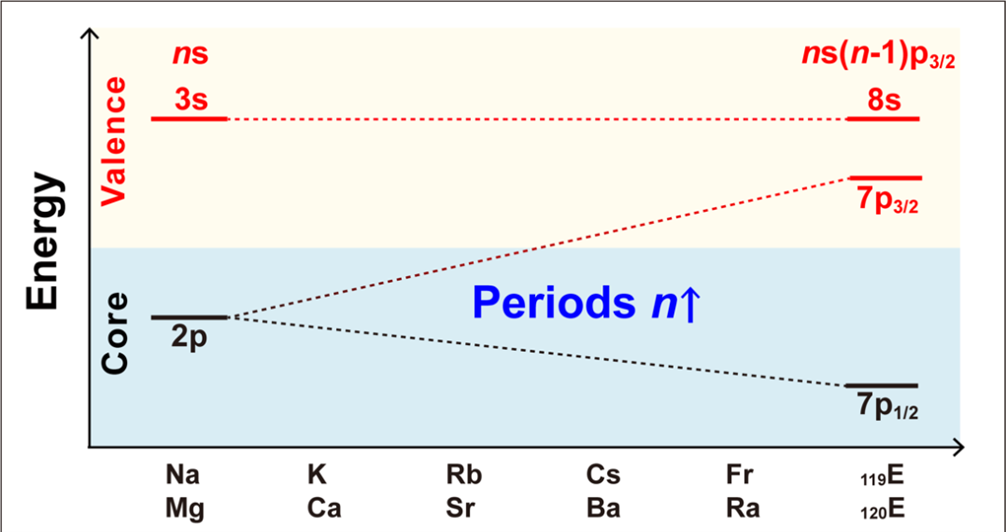Relativistic effects boost the termination of the classic periodic law of chemistry for the heavy elements
Many chemistry textbooks assume the unlimited validity of a simplified Periodic Law of Elements. In Nature, the chemical periodicity of the elements results from the large energy gaps between the atomic core and valence shells in the molecular electronic structures. However, for the super-heavy elements with increasing atomic number Z, these energy gaps decrease below a chemically critical value for two reasons, first because of the non-relativistic diminution of atomic orbital levels with increasing principal quantum numbers n, and second because of the increasing relativistic spin-orbit splitting of the levels. Therefore, the outer (n-1)p3/2 shell of the atomic [(n-1)sp]8 cores may become chemically activated for the super-heavy elements, as hinted by this orbital energy sketch:

To test this hypothesis, researchers led by Jun Li and W.H.Eugen Schwarz investigated the stability of alkali and alkaline-earth poly-fluorides using relativistic quantum chemistry with the ADF software. Geometry optimizations and chemical bonding analyses were performed at the scalar-relativistic and two-component spin-orbit coupled ZORA levels. The researchers predict that the traditionally mono- or di-valent heavy s-block elements (87Fr, 88Ra, 119E, 120E) exhibit unusual penta- or hexa-valency, respectively, at ambient conditions (i.e., without applying high pressure that supports many exotic bondings). Thus, the classic periodic law is shown to terminate at the bottom of standard periodic tables.
The chemistry at the bottom range of the periodic table is expected to exhibit many unexpected features!
Chang-Su Cao, Jing Zhao, Han-Shi Hu, W. H. E. Schwarz, J. Li. Polyvalent s-block elements: A missing link challenges the periodic law of chemistry for the heavy elements. Proc. Natl. Acad. Sci. U.S.A. 120, e2303989120 (2023).
Key conceptsADF bonding analysis heavy elements inorganic chemistry Relativistic DFT